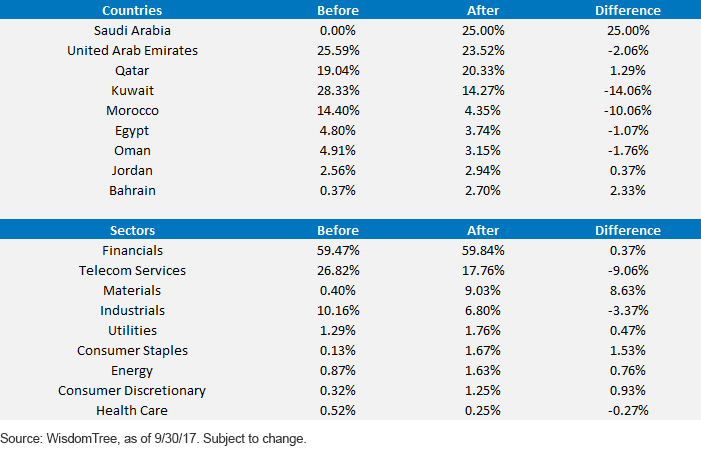At WisdomTree, we tend to do things differently, and in doing so we offer unique exposures to factors, markets or asset classes that we believe may be underrepresented. For some, it may come as a surprise that we have been offering exposure to Middle Eastern dividend-paying stocks for more than nine years, but for us it is just another one of our options that is coming up on a 10-year live track record. This unique exposure provides access to emerging and frontier markets that tend to benefit from oil but also have potential to use their oil wealth to grow their economies and diversify into other industries.
One major country that has been missing from the beginning was Saudi Arabia. Exchange-traded funds (ETFs) tend to be liquid vehicles, but they can only be as liquid as the underlying asset class they offer exposure to, and Saudi Arabia wasn’t freely open to foreign investors until recently. Beginning in April 2015, we began closely monitoring the Saudi market for inclusion in the WisdomTree Middle East Dividend Index, and this year at the annual rebalance we decided to add Saudi Arabia. Specifically, the Index selected the 30 largest Saudi stocks by market capitalization that passed the eligibility requirements to be included.
Another adjustment we made this year was applying an investability weighting factor across the Dividend Stream® of all companies. Historically, we have weighted each constituent by its full dividend market cap, meaning there is no adjustment for privately held or non-publicly traded shares (i.e., float). With the addition of Saudi companies, we thought now would be a good time to apply this factor across all constituents, which we believe will help with investability by scaling down the weight of companies with low float.
Country and Sector Changes












Leave A Comment